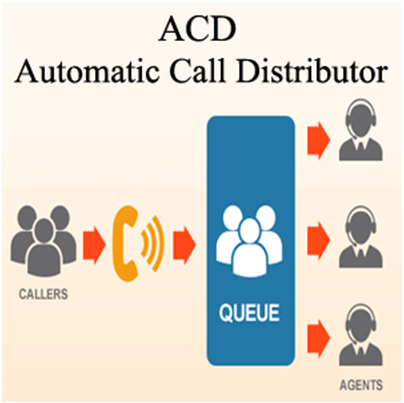What is the full form of ACDACD: Automatic Call DistributorACD stands for Automatic Call Distributor. It is a system or device that can recognize, manage and route large volumes of incoming calls. It is a part of a computer telephony integration (CTI) system. 
ACD effectively disperses incoming calls to the respecting groups of agents or executives. It matches the callers to the agents who can best help them. The small ACD devices are used to manage a few lines and large devices are used to manage a large number of lines. Most companies offering service support or post-sale services use ACDs to provide the best customer service to their customers. What distinguishes IVR and ACD from one another?Before being connected to an agent, consumers can communicate with an automated answering system using a technology known as interactive voice response (IVR). They are frequently used to identify the user's inquiry and, consequently, the type of support they require. IVRs accomplish this by requesting that the user push the phone's keys that match their problem. IVRs could instruct you to "Press 1 if you want to purchase a product," for instance. Instead of routing you to other departments, the ACD will then take your response and get in touch with sales people immediately. IVR is thus utilised to gather client information. The calls are then sorted and distributed by ACD using that data. Together, these two methods can significantly raise staff morale and customer satisfaction in your call centre. To better understand how the entire system functions, let us now take a closer look at the distribution process. How does ACD function?Three steps make up the call distribution process:
Step 1: Caller IDThe first stage, as previously noted, is to use an IVR to question the caller's intent. Systems for identifying callers can also be used to determine information like location and language. As a result, the ACD will be able to direct the caller to an agent who is best suited to address their issue. STEP 2: Call QueueingThe callers are then placed on a waiting list at the following stage. The distribution system bases its decision on a number of variables, including:
VIPs typically receive priority over everyone else, but the system can also be configured to group calls according to the other criteria described above. STEP 3: Call RoutingCall routing is the final action. Depending on the type of distribution strategy you chose, the ACD will route the calls accordingly. Want to cut down on customer long waiting times? The incoming call can be routed by the ACD to whoever is currently accessible. Do you want the top agent to manage your customer's needs? The system can be configured to distribute according to an agent's talents.
Next TopicFull Form
|
 For Videos Join Our Youtube Channel: Join Now
For Videos Join Our Youtube Channel: Join Now
Feedback
- Send your Feedback to [email protected]
Help Others, Please Share










